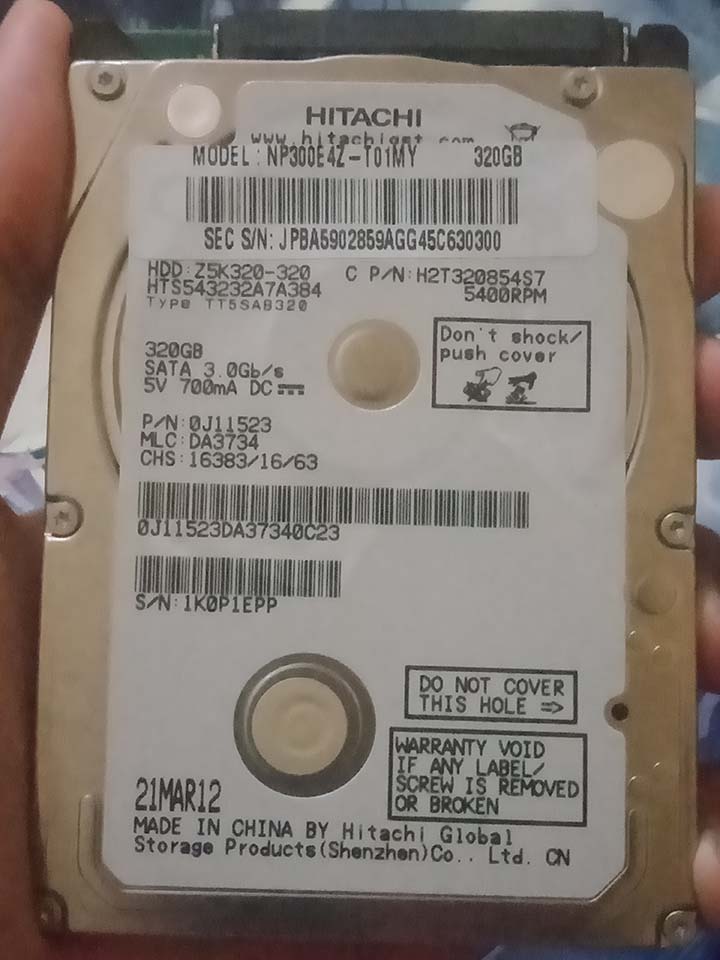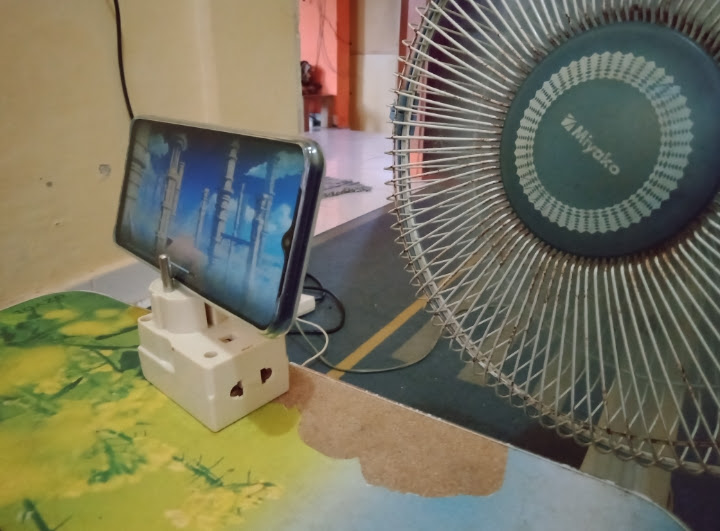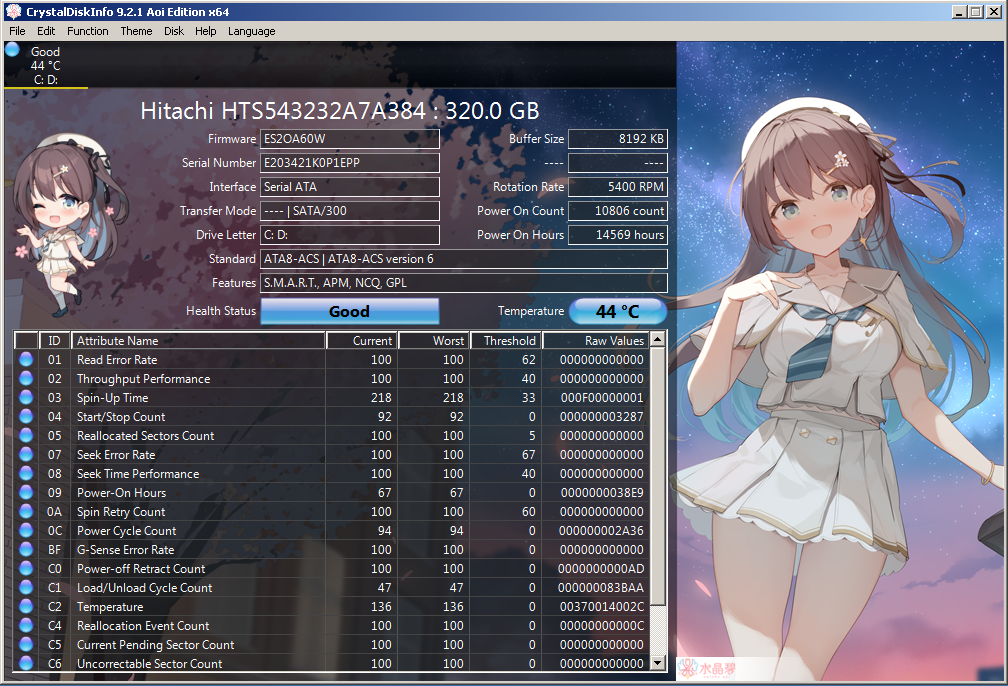Comparing: Hitachi HTS543232A7A384 vs OPPO A15s eMMC 5.1
In this comparison, we analyze two Disks: Hitachi HTS543232A7A384 and OPPO A15s eMMC 5.1, using synthetic benchmark tests to evaluate their overall performance. This side-by-side comparison helps users understand which hardware delivers better value, speed, and efficiency based on standardized testing. Whether you're building a new system or upgrading an existing one, this benchmark-driven evaluation offers valuable insights to guide your decision.

Hitachi HTS543232A7A384
| Type: | Disks |
|---|---|
| Model: | Hitachi HTS543232A7A384 |
| Capacity: | 320GB |
| Interface: | SATA-II 3Gbps |

OPPO A15s eMMC 5.1
| Type: | Disks |
|---|---|
| Model: | OPPO A15s eMMC 5.1 |
| Capacity: | 64GB |
| Interface: | eMMC |
Specification Comparison Table
This specification comparison presents technical details of several devices or components to help you understand the key differences between each option. Use this table as a reference to determine which device best suits your needs.
| Specification | Hitachi HTS543232A7A384 | OPPO A15s eMMC 5.1 |
|---|---|---|
| Brand | Hitachi | - |
| Format | HDD 2.5 | eMMC 5.1 |
| Capacity | 320GB | 64GB |
| Interface | SATA-II 3Gbps | eMMC |
Submission Comparison Table
This submission comparison table displays the number and details of benchmark data submissions from various devices or components. This information helps you understand the performance based on the benchmarks that have been tested, as well as providing an overview of the consistency and popularity of the available benchmark results.
Submission Comparison Chart
This chart visualizes the benchmark scores comparison between two hardware devices based on submitted data.
Media Gallery
A collection of photos of tested hardware. These images can help you identify the physical form, model, and variant of the hardware in question. These photos are from our own documentation, and if they are not available we may not be able to document them.
About Hardware Hitachi HTS543232A7A384
The Hitachi HTS543232A7A384 is a 2.5-inch hard disk with a 320GB capacity, designed for laptops and portable storage devices. It uses a 3Gbps SATA II interface and has a rotation speed of 5400 RPM, making it a more power-efficient option than 7200 RPM HDDs. This speed is ideal for light everyday use, where power efficiency and stability take precedence over high performance.
With 8MB of buffer cache, the drive is reliable enough to handle document storage, multimedia files such as music and videos, and light applications. While its data transfer speeds are not as fast as modern SSDs, the HTS543232A7A384 remains a solid choice for users looking for low-cost, high-capacity storage, especially in previous generation laptops or external enclosures.
The main test was conducted using a SAMSUNG 300E4Z laptop equipped with Intel Celeron B815, 4GB DDR3 Dual Channel RAM (2x2GB), and running Windows 7 64-bit operating system. The results obtained reflect real performance in an entry-level computing environment.
In addition, the HDD was also tested using the cross-platform method by utilizing a USB 3.0 enclosure connected to a Lenovo IdeaPad Slim 3i 14ITL6 (Intel Core i5-1135G7, Windows 11) via a USB 3.1 Gen 1 port. This test showed that the hard disk remains compatible and works well on modern devices via an external connection, although performance is limited by the speed of the internal drive.
With its reliable design and broad compatibility, the Hitachi HTS543232A7A384 is still relevant as a backup storage solution or external storage medium for users who need a sizable storage capacity without having to spend a lot.
Tested on:
Device: SAMSUNG 300E4Z
CPU: Intel Celeron B815
RAM: 4GB DDR3 Dual Channel (2x2GB)
OS: Windows 7
* Special Cross Platform Disk Test using IdeaPad Slim 3i 14ITL6 Laptop (i5-1135G7, Win11, USB 3.1 Gen 1) and using USB 3.0 Harddisk Enclosure
Tuesday, 22 November 2022 02:54:03 | Update: 1 month ago
About Hardware OPPO A15s eMMC 5.1
OPPO A15s eMMC 5.1 is the eMMC (embedded MultiMediaCard) version 5.1-based internal storage chip used in the OPPO A15s smartphone. The eMMC 5.1 technology is a significant upgrade from the previous generation, delivering faster read/write speeds, better power efficiency, and improved performance in data input/output management. While not as fast as the more modern UFS (Universal Flash Storage) technology, eMMC 5.1 remains a reliable storage standard for entry-level to mid-range smartphones.
This storage is designed to provide a seamless user experience, from opening apps, saving files, recording videos, to managing Android system data. It also plays an important role in operating system stability, lightweight multitasking, and response time when the device starts up or switches between apps.
The tests were conducted on an OPPO A15s device with MediaTek Helio P35 (MT6765) specifications, 4GB RAM, and 64GB internal storage, running on Android 10 operating system with ColorOS 7.2 interface. The test was conducted when the device had been in use for approximately two years, so the performance results may be slightly affected by NAND Flash performance degradation over time (wear leveling).
In a benchmark using the Cross Platform Disk Test (Mobile), the eMMC 5.1 on the OPPO A15s recorded a read speed of 145.27 MB/s and a write speed of 50.09 MB/s. This indicates that the storage performance is still solid enough for daily needs such as opening social media, streaming videos, accessing galleries, and saving files from third-party applications.
Overall, the eMMC 5.1 on the OPPO A15s is a well-balanced internal storage solution between price, efficiency, and performance, perfect for users who need a smartphone with responsive capabilities while remaining power efficient. For casual users, this performance is more than enough to run most popular Android apps without a hitch.
Device test (testbed):
Device: OPPO A15s
CPU: MediaTek MT6765 Helio P35
RAM: 4GB
Storage: 64GB
OS: Android 10, ColorOS 7.2
* This hardware test was conducted after the device was approximately 2 years old, there may be some performance degradation.
Tuesday, 06 April 2021 13:51:49 | Update: 1 month ago

